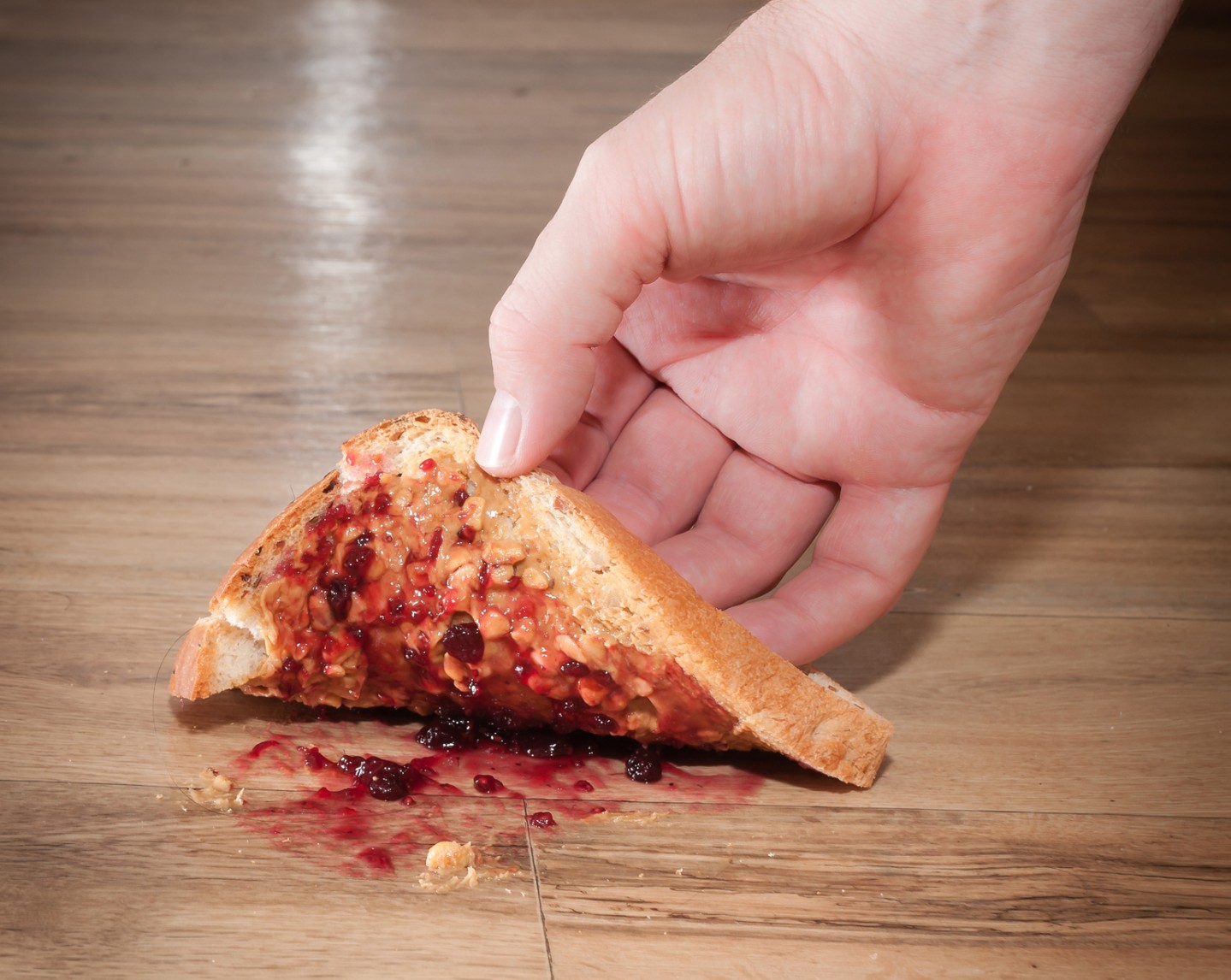The Gut-Bladder Connection: Nutrition for Optimal Function
JUN 11, 2025Proper diet is essential in maintaining bladder and bowel health as they affect your gut microbiome.
Read More
“5-second rule!” Who among us hasn’t applied this arbitrary grace period as permission to pop a treat into our mouths after scooping it off the floor?
Does staying under five seconds really protect us from germs?
Sadly, science says no.
It takes but an instant for bacteria to attach to food. That’s one conclusion from a Rutgers University two-year study by food microbiologist Donald W. Schaffner, Ph.D.
He found that longer contact with the floor resulted in more bacteria, but no fallen food came up clean.
“Bacteria can contaminate instantaneously,” Schaffner wrote in his article, “Is the 5-Second Rule Real?” (Published in the September 2016 edition of Applied and Environmental Microbiology, a journal of the American Society for Microbiology.)
There are, however, degrees of dirty. Moist foods, like watermelon, collected more bacteria than dry foods like gummy candies.
Not all surfaces are created equal, according to Jillian Clarke. She took on this topic as a high school senior and conducted a scientific study during a six-week internship in the food science and nutrition department of the University of Illinois at Urbana-Champaign.
After swabbing floors at the university’s lab, hall, dormitory, and cafeteria, Clarke found that dry floors tended to be cleaner. That’s because pathogens like salmonella and E coli need moisture to survive. She also found that people were more likely to eat dropped cookies and candies than vegetables.
Before you weigh the condition of the floor versus the worth of the dropped food, keep in mind that organisms don’t care about the 5-second rule and will attach to anything on the floor pretty quickly.
What many don’t realize is that foodborne illnesses can take up to a week to show symptoms. We tend to blame a stomach bug on the last thing we ate so it may be hard to pinpoint that picked-up cookie as the culprit.
For those with healthy immune systems, it may not matter and you’ll feel no ill effects from a few bacteria. But for some, those pathogens can be deadly. An estimated 76 million Americans contract foodborne illnesses each year, 300,000 are hospitalized and 5,000 die -- mostly small children, elderly and people with weakened immune systems.
Originally Published: July 2018. Revised: July 2022.

Proper diet is essential in maintaining bladder and bowel health as they affect your gut microbiome.
Read More
Did you know that what we eat can be directly reflected in our mood? Different foods and combinations of foods can boost our mood and help with symptoms of anxiety.
Read More
Your liver does so much for the body. As a filter and processing plant, it helps break down toxins, helps store energy and more. It's time to show it some love!
Read MoreWhen you need local health information from a trusted source, turn to the CHI Health Better You eNewsletter.